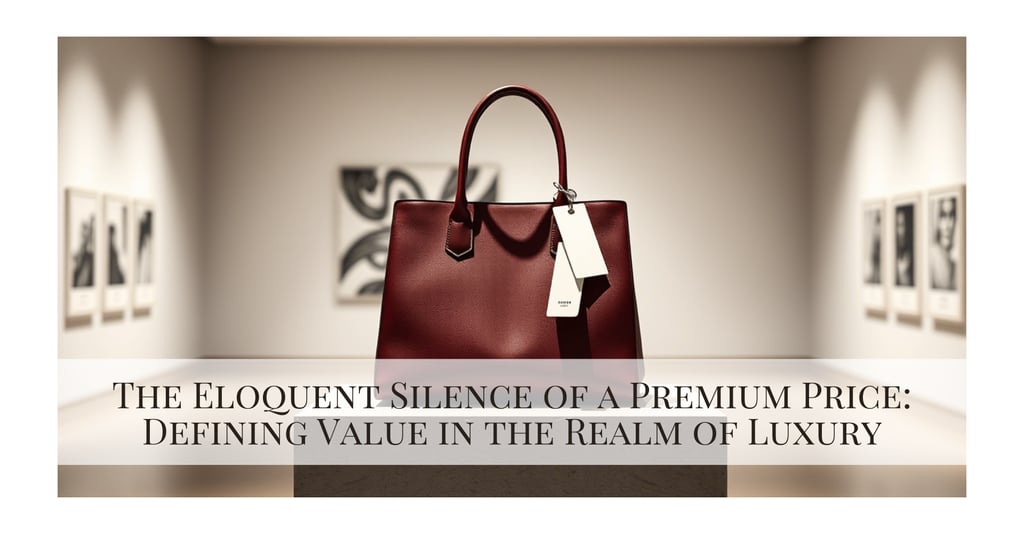The Eloquent Silence of a Premium Price: Defining Value in the Realm of Luxury
Ayssar Al Shihabi
5/29/20252 min read


In the sophisticated tapestry of luxury, price is rarely a mere transactional figure; it is a powerful, often unspoken, declaration of intrinsic worth, heritage, and unwavering commitment to a standard. It is a silent language understood by a discerning global clientele, a primary signifier that distinguishes the exceptional from the merely expensive. This understanding forms the bedrock of enduring luxury brands, setting them apart in a crowded marketplace.
Consider the venerable maison, Louis Vuitton. Its pricing strategy is a masterclass in conviction. Handbags, the brand's renowned standard-bearers, command figures from several thousand to tens of thousands of dollars, with entry-level pieces consistently positioned above the thousand-dollar threshold. This is not a static valuation. Prices undergo periodic elevations, yet the brand famously abstains from sales or promotional discounts. The implication is clear and resolute: the value is inherent, the desirability steadfast. Those who aspire to possess such an emblem of craftsmanship and status willingly meet the stated price. Louis Vuitton does not engage in price-based competition; it establishes the benchmark.
This principle extends with profound relevance to service-based enterprises within the luxury sector. For purveyors of exclusive experiences, bespoke consultations, or specialized advisory services, the temptation to calibrate pricing against perceived market accessibility can be a significant misstep. Attempting to compete on price often signals a lack of conviction in the unique value proposition offered. It can inadvertently initiate a descent towards commoditization, risking brand dilution and, counter-intuitively, the loss of the most desirable clientele.
Indeed, an unexpectedly low price point in the luxury sphere can act as a deterrent. A prospective client, evaluating options for a significant engagement – be it acquiring rare art, chartering a private yacht, or commissioning a unique piece of design – may interpret an unusually modest fee not as a bargain, but as an indicator of compromised quality, inexperience, or a lack of genuine exclusivity. The client seeking true luxury is often reassured by a price that reflects the anticipated caliber of service, expertise, and outcome. A premium price, in this context, becomes a filter, attracting those who understand and seek the exceptional, while discouraging those for whom price is the primary consideration.
Looking towards the horizon of luxury branding, the justification for premium pricing is evolving, becoming richer and more nuanced. While craftsmanship, heritage, and exclusivity remain paramount, the unapologetic price tag will increasingly signify a deeper commitment. It will serve as a transparent testament to a brand's substantial investment in pioneering sustainable practices, the ethical sourcing of rare materials, the preservation and advancement of artisanal skills, and the cultivation of unparalleled, deeply personalized client experiences. The premium, therefore, transcends a simple marker of scarcity; it becomes an emblem of responsible stewardship, innovation, and a holistic vision of value that resonates with an increasingly conscious global elite.
Ultimately, the strategic deployment of premium pricing is more than a commercial tactic; it is an integral component of the luxury narrative. It communicates confidence, defines perceived value, and safeguards the rarefied aura that is the very essence of a luxury brand. For those who create and curate luxury, understanding this powerful dynamic is not merely an advantage—it is fundamental to enduring success and relevance.


